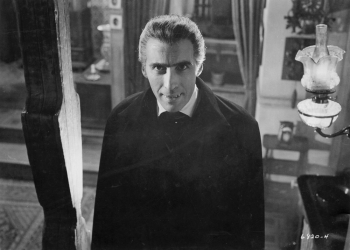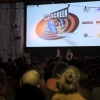DRACULA MADE IN HAMMER | Offscreen
In 1958, Dracula was released, one of Hammer Film Productions' most emblematic films, which made Christopher Lee a star of the horror genre. The attempt to rekindle the appetite for the classic horror films that Universal had released in the 1930s became a great success. The film managed to replace the immortal Bela Lugosi with a new, sultry, and impactful icon that shone in color film, bringing the red of blood to the white screen. Terence Fisher, who had already revived the Frankenstein myth the previous year with The Curse of Frankenstein, became the star director of the golden age of this famous British production company. The film was so successful that the studio turned it into a franchise of nine films over 16 years.
Terence Fisher stepped away after the third film, while Christopher Lee distanced himself from the character he wanted to leave behind at all costs but to which he was chained. He would only be released from it much later when the character of Saruman in The Lord of the Rings would finally overshadow his Dracula. However, Dracula, the moneymaker for Hammer Film Productions, would not stand the test of time well. Attempts were made to adapt the character to the zeitgeist in the overly kitschy Dracula A.D. 1972 and in the final film of the series, The Legend of the 7 Golden Vampires, co-produced with the Shaw Brothers and riding the wave of martial arts film craze.
HORROR OF DRACULA
Jonathan Harker ends up with Count Dracula and becomes a vampire... Doctor Van Helsing comes to his aid, determined to put an end to the infamous vampire. A loose adaptation of Bram Stoker's novel, from which a mythical Dracula emerges that will forever leave its mark on film history.
THE LEGEND OF THE 7 GOLDEN VAMPIRES
Dracula goes to China to spread terror with the help of seven Chinese vampires. However, he did not count on the descendant of the famous Doctor Van Helsing, who is determined to put an end to the vampire's violence once and for all.








